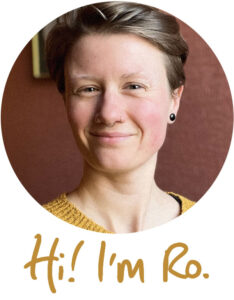How To Stop the Fight or Flight Response

Different parts of our brains are responsible for the four responses we often default to when in a situation we perceive as threatening: people-pleasing (hyper-socialisation), fight, flight, and freeze. Because these responses don’t distinguish between real and perceived threat, it doesn’t matter whether we are actually in danger or not: most often we’ll go into one of these responses in everyday situations when in fact we’re perfectly safe, such as when we’re socialising in a large group or in a disagreement with someone we love.
What Is The Fight or Flight Response?
We’re actually talking about four different survival responses. In brief: hyper-socialisation appears as trying to keep everyone happy. This could involve telling lots of jokes, giving lots of compliments, or smiling and laughing much more than you might otherwise. The fight response can manifest as outright aggression, or as trying to exert control over a situation. Flight causes us to want to disengage, run away, and hide, while freeze involves a level of dissociation where we literally freeze up, often becoming unable to move or act.
These are emotional responses which may have been caused by unresolved trauma at some point in our history, and triggered by a current event. The more evolved part of our brain, our neocortex, would allow us to rationalise and notice that we are not in any real danger and that we don’t need to fight or dissociate. But this part of our brain doesn’t respond as quickly as the older limbic system, and instead our survival instincts kick in much faster and prevent us from behaving the way we would like to.
If this happens often and prevents you from the intimacy and anxiety-free social life you want, there are things you can do. Of course therapy may be useful, but there are also ways of helping yourself to move through these responses so they have less power over your behaviour.
1. Notice Your Fight or Flight Symptoms
The first thing to do is to become acquainted with the behaviour your stress response triggers. For people with social anxiety, socialising in groups could go one of several ways: perhaps a hyper-socialising response where they go into people-pleasing mode, desperately trying to impress everyone in the room, or a shut-down frozen response where they feel completely unable to form sentences.
Whatever the situation you struggle with, and the response it elicits, notice what happens in your body. Do you start biting your fingernails or feeling your face going red? Do you feel tingling in your limbs or squirming in your belly? Becoming more connected to your body helps to identify when your limbic system is kicking in, which is the first step to taking away its control.
This isn’t an overnight process, but with practice you can learn the patterns that signify you’re becoming stressed before it spirals too far.
2. Move Away from the Fight or Flight Response
Once you’re able to notice when you start to move into one of these responses you can work with it to move into a less anxious place. Because the fight or flight response comes from the oldest part of our brain in evolutionary terms, the trick is to stop functioning from this place and instead re-engage our neocortex so that more rational behaviour can take over again.
Grounding exercises are a good way to achieve this: asking the brain to notice the body, the environment, and acknowledge who, what, and where we are. Reminding yourself of the actual safe situation you are in rather than the perceived threat. When you first begin practicing this it may help, if possible, to take yourself into a quiet place for a few moments.
You can begin by noticing all the places your body is currently in contact with the earth, maybe your feet on the floor and your buttocks on a chair. Feel the contact, your weight, and the support of the surface. Then move your attention through the rest of your body, noticing each part in turn.
Next, take in your environment, noticing details: perhaps counting how many things of a certain colour you can see. This further helps to bring you back into the part of your brain that can analyse your current situation in a more measured way.
Finally, the breath can be helpful too. Breathing usually becomes shallow and high up in the chest when we’re stressed; by slowing the breath down and bringing it deeper into the belly you can help to move yourself out of anxiety.
3. Practice, Patience, and Compassion
This is a process that takes patience: you’re trying to change potentially deeply ingrained patterns of behaviour, which could take a lot of conscious effort. These stress responses can feel familiar and comfortable, even if we regret our behaviour later. Finding a healthier version of comfortable takes time.
Finding compassion for yourself, both for the stress responses you live with and the time and effort it may take to overcome them, is important too. We all live with patterns that hinder our expression in some way because they’re not an easy thing to recognise or change, and recognising this can help to ease the journey.




Thank you so much! Your explanations are so clear and feel really helpful. I’ve been studying these things for a while now, just qualified as a counsellor and studying body process awareness but still not good at meeting my own stress responses and relational habits.
Thank you! And congrats on qualifying 🙂